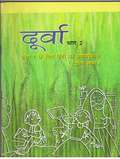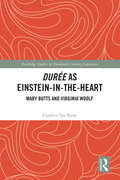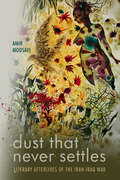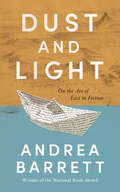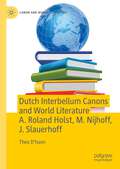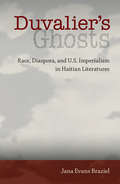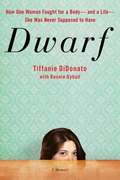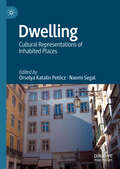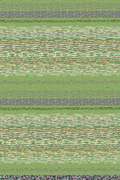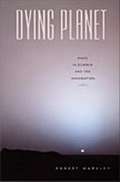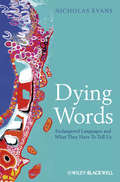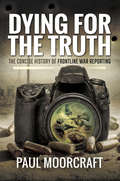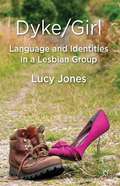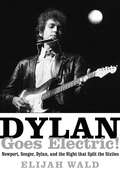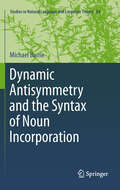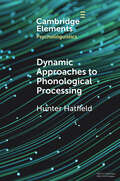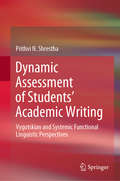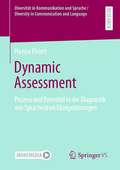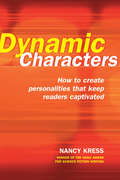- Table View
- List View
Durva Bhag-2 class 7 - NCERT - 23: दूर्वा भाग-२ ७वीं कक्षा - एनसीईआरटी - २३
by Rashtriy Shaikshik Anusandhan Aur Prashikshan Parishadदूर्वा भाग 2 कक्षा 7 के लिए हिंदी की पाठ्यपुस्तक-द्वितीय भाषा - यह किताब राष्ट्रीय पाठ्यचर्या की रूपरेखा (2005) के आधार पर तैयार किए गए पाठ्यक्रम पर आधारित है। यह पारंपरिक भाषा-शिक्षण की सभी सीमाओं से आगे जाती है। राष्ट्रीय पाठ्यचर्या की नयी रूपरेखा भाषा को बच्चे के व्यक्तित्व का सबसे समृद्ध संसाधन मानते हुए उसे पाठ्यक्रम के हर विषय से जोड़कर देखती है। भाषा की शिक्षा मातृभाषा से प्रभावित मात्र ही नहीं होती बल्कि वह द्वितीय भाषा कौशल की समृद्धि में भी लाभप्रद और सहायक सिद्ध होती है। इसी को ध्यान में रखकर विद्यार्थियों के हिंदी की सामान्य संरचनाओं की जानकारी को धीरे-धीरे उसकी विशिष्ट और विपुल संरचनाओं की जानकारी से जोड़ने की कोशिश इसमें की गई है। इसमें यथासंभव सहज और सरल भाषिक संरचनाओं वाले सरस और रोचक पाठों का चयन किया गया है। पाठों के चयन में हिंदी के महत्त्वपूर्ण रचनाकारों की बाल रचनाओं को शामिल कर द्वितीय भाषा के रूप में हिंदी पढ़ने-पढ़ानेवालों को हिंदी की समृद्ध साहित्य परंपरा के प्रति रुचि बढ़ाने की भी कोशिश है। पाठों की भाषा और विषयवस्तु न केवल महत्त्वपूर्ण है बल्कि अन्य विषयों के ज्ञान को भी अपने में समेटे हुए है, जो विद्यार्थियों की भाषा और साहित्य को पढ़ने-समझने और जानने-बताने की रुचि को बढ़ाने में सहायक होगी।
Durée as Einstein-in-the-Heart: Mary Butts and Virginia Woolf (Routledge Studies in Twentieth-Century Literature)
by Candice Lee KentDurée as Einstein-in-the-Heart traces the trajectory of modernist interaction with Bergson and Einstein through the works of Virginia Woolf (1882–1941) and Mary Butts (1890–1937). It presents an overview of critical approaches that focus on time in Woolf’s novels, and that foreground Bergson in their analyses of Woolf. It then examines how Woolf’s formal experimentation, and theorisation of time, in Jacob’s Room (1922) and Mrs Dalloway (1925) relates to Bergson’s temporal theories. This is followed by a discussion on the role Bergson’s thinking played in the early formulation of Butts’s ideas of time, and an analysis of how Bergson’s ideas emerge in the short story ‘Angele au Couvent’ (1923), concluding by highlighting points of contrast in the engagements of Woolf and Butts. The book then documents the growth of Butts’s interest in Einstein’s ideas and shows how she amalgamates these with Bergson’s thinking in her journals and in the most intense of her fictional engagement with Einstein’s ideas, the novel Death of Felicity Taverner (1932). It discusses Butts’s responses to the popular science genre and examines the important role played by J. W. N. Sullivan and Arthur Eddington in the development of her understanding, and interpretation, of physics. It concludes with a discussion of Butts’s antisemitic characterisation of Kralin, as purveyor of corrupted science, in contrast with the Taverners, who are conscious of durée and delight in the abstractions of scientific truth.
Dust Off the Gold Medal: Rediscovering Children’s Literature at the Newbery Centennial (Children's Literature and Culture)
by Sara L. SchwebelThe oldest and most prestigious children’s literature award, since 1922 the Newbery Medal has been granted annually by the American Library Association to the children’s book it deems "most distinguished." Medal books enjoy an outsized influence on American children’s literature, figuring perennially on publishers’ lists, on library and bookstore shelves, and in school curricula. As such, they offer a compelling window into the history of US children’s literature and publishing, as well as into changing societal attitudes about which books are "best" for America’s schoolchildren. Yet literary scholars have disproportionately ignored the Medal winners in their research. This volume provides a critically- and historically-grounded scholarly analysis of representative but understudied Newbery Medal books from the 1920s through the 2010s, interrogating the disjunction between the books’ omnipresence and influence, on the one hand, and the critical silence surrounding them, on the other. Dust Off the Gold Medal makes a case for closing these scholarly gaps by revealing neglected texts’ insights into the politics of children’s literature prizing and by demonstrating how neglected titles illuminate critical debates currently central to the field of children’s literature. In particular, the essays shed light on the hidden elements of diversity apparent in the neglected Newbery canon while illustrating how the books respond—sometimes in quite subtle ways—to contemporaneous concerns around race, class, gender, disability, nationalism, and globalism.
Dust Off the Gold Medal: Rediscovering Children’s Literature at the Newbery Centennial (Children's Literature and Culture)
by Sara L. SchwebelThe oldest and most prestigious children’s literature award, the Newbery Medal has since 1922 been granted annually by the American Library Association to the children’s book it deems "most distinguished." Medal books enjoy an outsized influence on American children’s literature, figuring perennially on publishers’ lists, on library and bookstore shelves, and in school curricula. As such, they offer a compelling window into the history of US children’s literature and publishing, as well as into changing societal attitudes about which books are "best" for America’s schoolchildren. Yet literary scholars have disproportionately ignored the Medal winners in their research. This volume provides a critically- and historically-grounded scholarly analysis of representative but understudied Newbery Medal books from the 1920s through the 2010s, interrogating the disjunction between the books’ omnipresence and influence, on the one hand, and the critical silence surrounding them, on the other. Dust Off the Gold Medal makes a case for closing these scholarly gaps by revealing neglected texts’ insights into the politics of children’s literature prizing and by demonstrating how neglected titles illuminate critical debates currently central to the field of children’s literature. In particular, the essays shed light on the hidden elements of diversity apparent in the neglected Newbery canon while illustrating how the books respond—sometimes in quite subtle ways—to contemporaneous concerns around race, class, gender, disability, nationalism, and globalism.
Dust That Never Settles: Literary Afterlives of the Iran-Iraq War (Stanford Studies in Middle Eastern and Islamic Societies and Cultures)
by Amir MoosaviLasting from September 1980 to August 1988, the Iran-Iraq War was the longest conventional war fought between two states in the twentieth century. It marked a period that began just after a revolutionary government in Iran became an Islamic Republic and Saddam Hussein consolidated power in Iraq. It ended with both wartime governments still in power, borders unchanged, yet hundreds of thousands of people dead. Neither side emerged as a clear victor, but both sides would eventually claim victory in some form. Dust That Never Settles considers how Iraqi and Iranian writers have wrestled with representing the Iran-Iraq War and its legacy, from wartime to the present. It demonstrates how writers from both countries have transformed once militarized, officially sanctioned war literatures into literatures of mourning, and eventually, into vehicles of protest that presented powerful counternarratives to the official state narratives. In writing the first comparative study of the literary output of this war, Amir Moosavi presents a new paradigm for the study of modern Middle Eastern literatures. He brings Persian and Arabic fiction into conversation with debates on the political importance of cultural production across the Middle East and North Africa, and he puts an important new canon of works in conversation with comparative literary and cultural studies within the Global South.
Dust and Light: On the Art of Fact in Fiction
by Andrea BarrettOne of Literary Hub's Most Anticipated Books of 2025 The National Book Award–winning writer’s intimate exploration of how fact is transformed into fiction. Hailed as a "genius-enchantress" (Karen Russell) and winner of the MacArthur Fellowship, the celebrated novelist Andrea Barrett has for decades reached backward to find inspiration from the past and written acclaimed and prizewinning works of historical fiction. In Dust and Light, the first work of nonfiction of her extraordinary career, Barrett draws from that deep well of experience to explore the mysteries, methods, and delights of the form. Inspiration found in the past, she argues, can illuminate fiction, just as dust scatters light and makes the unseen visible. Barrett writes of lessons gleaned from the classic work of some of her guiding lights (Willa Cather, Henry James, Leo Tolstoy, Virginia Woolf), as well as the work of such contemporary masters as Hilary Mantel, Toni Morrison, Colm Tóibín, and Jesmyn Ward. She reveals how she created some of her own beloved works, taking readers on a fascinating journey into some of the largest questions in the genre: How does a writer find meaningful subject matter beyond the confines of their life? How are scraps of history found, used, misused, manipulated, and transformed into a fully formed narrative? And what are the perils as well as the potential of this process? Building on pieces originally published in leading literary magazines and featured in The Best American Essays, Dust and Light is an elegant exploration of the hazy borderlands of fiction sewn from the materials of history. Filled with profound insights, it will be a delight for any devoted fiction readers, and of great use to aspiring writers too.
Dutch Interbellum Canons and World Literature A. Roland Holst, M. Nijhoff, J. Slauerhoff (Canon and World Literature)
by Theo D’haenThis text takes a wholly new look at a major early twentieth-century Dutch poet and novelist from the perspective of world literature, situating his work in both a national and a world literary context as measured against contemporaries and near-contemporaries such as Conrad, Pound, Brecht, Segalen, and Malraux. Exemplifying how an author from a “minor” literature may be a “major” world author, this book considers the debates within World Literature regarding the classification of literatures as ‘major’ and ‘minor’, canon formation within Dutch literature, Slauerhoff's position in the Dutch tradition as well as well as his contribution to world literature, particularly focusing on his East Asian poems, his East Asian novels and stories and his poetry and prose set in Latin America. This book is a key read for scholars and students of comparative literature, world literature, European literature, and Dutch literature. Lucid in style, innovative in approach, surprisingly fresh qua topic, this book opens new horizons for literary studies.
Dutch: An Essential Grammar (Routledge Essential Grammars)
by Esther Ham William Z. ShetterNow in its 10th edition, Dutch: An Essential Grammar is a reference guide to the most important aspects of modern Dutch as it is used by native speakers. Features include: A brand new chapter on negation; A user-friendly style to ensure all elements of the language that are of particular difficulty to English speakers are adequately explained; ‘Let’s Try That’ sections in each chapter containing sample exercises; More examples and cross-referencing throughout, and a comprehensive glossary and index at the back of the book; Full use of examples given throughout illustrating modern usage. Dutch: An Essential Grammar is the ideal reference source both for those studying Dutch independently and for students in colleges, universities and adult classes.
Duvalier's Ghosts: Race, Diaspora, and U.S. Imperialism in Haitian Literatures
by Jana Evans Braziel"Urgently pursues those nameless ghosts of Haitians lost in the liminal space of the Black Atlantic."--New West Indian Guide "Foregrounds the experiences of refugees (particularly those refused asylum and detained in camps), the political mobilization of the diaspora in the United States, the ramifications of the policies and adjustment programmes imposed on Haiti by the World Bank, the International Monetary Fund and USAID."--Bulletin of Latin American Research "Theoretically sound and well researched. Braziel has written a compelling book on the literatures of post-Duvalier Haiti."--Millery Polyne, New York University "A very original study, a tour-de-force that crisscrosses the disciplinary boundaries typically separating the social sciences and the humanities. It is richly researched, beautifully written, and will surely attract much critical attention and praise."--Valerie Kaussen, University of Missouri From a position of urgent political engagement, this provocative book offers novel and compelling interpretations of several well-known Haitian-born authors, particularly regarding U.S. intervention in their homeland. Drawing on the diasporic cultural texts of several authors, such as Edwidge Danticat and Dany Laferrière, Jana Evans Braziel examines how writers participate in transnational movements for global social justice. In their fictional works they discuss the United States’ many interventionist methods in Haiti, including surveillance, foreign aid, and military assistance. Through their work, they reveal that the majority of Haitians do not welcome these intrusions and actively criticize U.S. treatment of Haitians in both countries. Braziel encourages us to analyze the instability and violence of small nations like Haiti within the larger frame of international financial and military institutions and forms of imperialism. She forcefully argues that by reading these works as anti-imperialist, much can be learned about why Haitians and Haitian exiles often have negative perceptions of the U.S.
Dwarf: A Memoir
by Rennie Dyball Tiffanie DidonatoTiffanie DiDonato was born with dwarfism. Her limbs were extremely short preventing her from even reaching her own ears. To achieve independence, she underwent a series of painful bone-lengthening surgeries that gave her an unprecedented 14 inches of height--and the independence she never thought she'd have. After her surgeries, Tiffanie was able to learn to drive, to live in the dorms during college, and to lead a normal life. As a volunteer during the War in Iraq, she wrote to the men stationed abroad. Specifically, she became a pen pal to one of the Marines, and because of this relationship, he ultimately became her husband. In this book, she wrote: "It's okay with me if you picked up this book because you're curious about what it's like to live with dwarfism. But I hope that you'll take away much more--about freedom, finding independence, and adapting to the world when it won't adapt to you."
Dwelling: Cultural Representations of Inhabited Places
by Naomi Segal Orsolya Katalin PetőczDwelling is both an action and a location; it combines the spatial idea of habitation (dwelling in) with the temporal idea of lingering (dwelling on). We live not only in bricks and mortar, a tent, a hut or a spaceship, but also in that most changeful of forms, our body, or in a remembered or virtual home. Especially since COVID-19 we have seen changes in the topography of everyday life. In this multi-disciplinary collection, a complex of meanings is approached from a variety of specific, often personal angles.Framed by two longer essays which theorise how the psychology of home may change under sudden pressure and how social relations are embodied in windows, doors, walls and stairs, the book includes 18 further essays. Part I, ‘Informal settlements’, shows how a slum, urban development or nomadic life may create a self-sustaining identity; in Part II, ‘Huts and bridges’, impermanence shapes the state of dwelling, while Part III, ‘Liminal bodies’, presents bodies suspended at thresholds of change. Movement in time and space characterises the last three sections: Part IV, ‘Moving home’, depicts transitions and arrivals, Part V, ‘Dwelling in Memory’, focuses on recollections of past places and Part VI, ‘Are we there yet?’, points the way to a future in which the consulting-room changes to 2D, a family is exiled onto the small screen or we imagine breaking away altogether into outer space.
Dying Modern: A Meditation on Elegy
by Diana FussIn Dying Modern, one of our foremost literary critics inspires new ways to read, write, and talk about poetry. Diana Fuss does so by identifying three distinct but largely unrecognized voices within the well-studied genre of the elegy: the dying voice, the reviving voice, and the surviving voice. Through her deft readings of modern poetry, Fuss unveils the dramatic within the elegiac: the dying diva who relishes a great deathbed scene, the speaking corpse who fancies a good haunting, and the departing lover who delights in a dramatic exit. Focusing primarily on American and British poetry written during the past two centuries, Fuss maintains that poetry can still offer genuine ethical compensation, even for the deep wounds and shocking banalities of modern death. As dying, loss, and grief become ever more thoroughly obscured from public view, the dead start chattering away in verse. Through bold, original interpretations of little-known works, as well as canonical poems by writers such as Emily Dickinson, Randall Jarrell, Elizabeth Bishop, Richard Wright, and Sylvia Plath, Fuss explores modern poetry's fascination with pre- and postmortem speech, pondering the literary desire to make death speak in the face of its cultural silencing.
Dying Planet: Mars in Science and the Imagination
by Robert MarkleyFor more than a century, Mars has been at the center of debates about humanity's place in the cosmos. Focusing on perceptions of the red planet in scientific works and science fiction, Dying Planet analyzes the ways Mars has served as a screen onto which humankind has projected both its hopes for the future and its fears of ecological devastation on Earth. Robert Markley draws on planetary astronomy, the history and cultural study of science, science fiction, literary and cultural criticism, ecology, and astrobiology to offer a cross-disciplinary investigation of the cultural and scientific dynamics that have kept Mars on front pages since the 1800s. Markley interweaves chapters on science and science fiction, enabling him to illuminate each arena and to explore the ways their concerns overlap and influence one another. He tracks all the major scientific developments, from observations through primitive telescopes in the seventeenth century to data returned by the rovers that landed on Mars in 2004. Markley describes how major science fiction writers--H. G. Wells, Kim Stanley Robinson, Philip K. Dick, Edgar Rice Burroughs, Ray Bradbury, Robert Heinlein, and Judith Merril--responded to new theories and new controversies. He also considers representations of Mars in film, on the radio, and in the popular press. In its comprehensive study of both science and science fiction, Dying Planet reveals how changing conceptions of Mars have had crucial consequences for understanding ecology on Earth.
Dying Words
by Nicholas EvansThe next century will see more than half of the world's 6,000 languages become extinct, and most of these will disappear without being adequately recorded. Written by one of the leading figures in language documentation, this fascinating book explores what humanity stands to lose as a result.Explores the unique philosophy, knowledge, and cultural assumptions of languages, and their impact on our collective intellectual heritageQuestions why such linguistic diversity exists in the first place, and how can we can best respond to the challenge of recording and documenting these fragile oral traditions while they are still with usWritten by one of the leading figures in language documentation, and draws on a wealth of vivid examples from his own field experienceBrings conceptual issues vividly to life by weaving in portraits of individual 'last speakers' and anecdotes about linguists and their discoveries
Dying for Time: Proust, Woolf, Nabokov
by Martin HagglundMarcel Proust, Virginia Woolf, and Vladimir Nabokov transformed the art of the novel in order to convey the experience of time. Nevertheless, their works have been read as expressions of a desire to transcend time-whether through an epiphany of memory, an immanent moment of being, or a transcendent afterlife. Martin Hägglund takes on these themes but gives them another reading entirely. The fear of time and death does not stem from a desire to transcend time, he argues. On the contrary, it is generated by the investment in temporal life. From this vantage point, Hägglund offers in-depth analyses of Proust’s Recherche, Woolf’s Mrs. Dalloway, and Nabokov’s Ada. Through his readings of literary works, Hägglund also sheds new light on topics of broad concern in the humanities, including time consciousness and memory, trauma and survival, the technology of writing and the aesthetic power of art. Finally, he develops an original theory of the relation between time and desire through an engagement with Freud and Lacan, addressing mourning and melancholia, pleasure and pain, attachment and loss. Dying for Time opens a new way of reading the dramas of desire as they are staged in both philosophy and literature.
Dying for the Truth: The Concise History of Frontline War Reporting
by Paul MoorcraftThe role of war correspondents is crucial to democracy and the publics discovery of the truth. Without them, the temptation to manipulate events with propaganda would be irresistible to politicians of all hues.It starts by examining how journalists have plied their trade over the years most particularly from the Crimean War onwards. Their impact on the conduct of war has been profound and the author, an experienced journalist, explains in his frank and readable manner how this influence has shaped the actions of politicians and military commanders. By the same token the media is a potentially valuable tool to those in authority and this two-way relationship is examined.Technical developments and 24 hour news have inevitably changed the nature of war reporting and their political masters ignore this at their peril and the author examines the key milestones on this road.Using his own and others experiences in recent conflicts, be they Korea, Falklands, Balkans, Iraq or Afghanistan, the author opens the readers eyes to an aspect of warfare that is all too often overlooked but can be crucial to the outcome. The publics attitude to the day-to-day conduct of war is becoming ever more significant and this fascinating book examines why.
Dying to be English: Suicide Narratives and National Identity, 1721–1814 (Gender and Genre #8)
by Kelly McGuireThis study examines the presentation of suicide within the genre of the eighteenth-century novel. Referencing several key writers of the period, McGuire demonstrates that their work inscribes a nationalist imperative to frame suicide as self-sacrifice.
Dyke/Girl: Language and Identities in a Lesbian Group
by Lucy JonesThis book explores the construction of identities within a lesbian group, outlining interactive tactics used in the production of mutually-negotiated norms of authenticity. Using ethnography and discourse analysis, a range of group-specific personae are revealed to be continually reworked and reproduced within the women's interaction.
Dylan Goes Electric!: Newport, Seeger, Dylan, and the Night that Split the Sixties
by Elijah WaldTHE INSPIRATION FOR THE MAJOR MOTION PICTURE A COMPLETE UNKNOWN. One of the music world’s pre-eminent critics takes a fresh and much-needed look at the day Dylan “went electric” at the Newport Folk Festival.On the evening of July 25, 1965, Bob Dylan took the stage at Newport Folk Festival, backed by an electric band, and roared into his new rock hit, Like a Rolling Stone. The audience of committed folk purists and political activists who had hailed him as their acoustic prophet reacted with a mix of shock, booing, and scattered cheers. It was the shot heard round the world—Dylan’s declaration of musical independence, the end of the folk revival, and the birth of rock as the voice of a generation—and one of the defining moments in twentieth-century music.In Dylan Goes Electric!, Elijah Wald explores the cultural, political and historical context of this seminal event that embodies the transformative decade that was the sixties. Wald delves deep into the folk revival, the rise of rock, and the tensions between traditional and groundbreaking music to provide new insights into Dylan’s artistic evolution, his special affinity to blues, his complex relationship to the folk establishment and his sometime mentor Pete Seeger, and the ways he reshaped popular music forever. Breaking new ground on a story we think we know, Dylan Goes Electric! is a thoughtful, sharp appraisal of the controversial event at Newport and a nuanced, provocative, analysis of why it matters.“In this tour de force, Elijah Wald complicates the stick-figure myth of generational succession at Newport by doing justice to what he rightly calls Bob Dylan’s ‘declaration of independence’ . . . This is one of the very best accounts I’ve read of musicians fighting for their honor.” — Todd Gitlin, author of The Sixties and Occupy Nation
Dylan Thomas
by William ChristieDylan Thomas: A Literary Life offers an accurate and unsensationalized account of the poet's life in the context of British and American literary culture in the first half of the twentieth century, along with a critical reading of a selection of characteristic works in the many different genres in which Dylan Thomas worked, from the dense and rhetorically powerful lyrics which established his reputation through his stories and radio and film scripts to the triumphant 'play for voices', Under Milk Wood. This study is designed to close what has been called 'the yawning gap' between Thomas's popular and critical reputations, and is a major contribution to the revival and revision of the poet's work and reputation.
Dynamic Antisymmetry and the Syntax of Noun Incorporation
by Michael BarrieThis innovative analysis of noun incorporation and related linguistic phenomena does more than just give readers an insightful exploration of its subject. The author re-evaluates--and forges links between--two influential theories of phrase structure: Chomsky's Bare Phrase Structure and Richard Kayne's Antisymmetry. The text details how the two linguistic paradigms interact to cause differing patterns of noun incorporation across world languages. With a solid empirical foundation in its close reading of Northern Iroquoian languages especially, Barrie argues that noun incorporation needs no special mechanism, but results from a symmetry-breaking operation. Drawing additional data from English, German, Persian, Tamil and the Polynesian language Niuean, this synthesis has major implications for our understanding of the formation of the verbal complex and the intra-position (roll-up) movement. It will be priority reading for students of phrase structure, as well as Iroquoian language scholars.
Dynamic Approaches to Phonological Processing (Elements in Psycholinguistics)
by Hunter HatfieldNatural language occurs in time. Events happen earlier, later, or simultaneously with other events; however, this temporal dimension is often downplayed or overlooked. This Element introduces readers with a background in structural linguistics to dynamic approaches to phonological processing. It covers models of serial order, speech production and speech perception, with special attention to how they can enhance one another. The work then asks whether dynamic approaches have the potential to change how we think of phonological structure. Key ideas discussed include phonemes and auditory targets, control mechanisms creating structure, and the shape of phonological representations in a dynamic context. The work should function as a bridge for those with linguistic questions who want to learn answers derived from the study of speech as a dynamic system.
Dynamic Assessment of Students’ Academic Writing: Vygotskian and Systemic Functional Linguistic Perspectives
by Prithvi N. ShresthaThis book explores the application of an innovative assessment approach known as Dynamic Assessment (DA) to academic writing assessment, as developed within the Vygotskian sociocultural theory of learning. DA blends instruction with assessment by targeting and further developing students’ Zone of Proximal Development (ZPD).The book presents the application of DA to assessing academic writing by developing a set of DA procedures for academic writing teachers. It further demonstrates the application of Hallidayan Systemic Functional Linguistics (SFL), combined with DA, to track undergraduate business management students’ academic writing and conceptual development in distance education.This work extends previous DA studies in three key ways: i) it explicitly focuses on the construction of a macrogenre (whole text) as opposed to investigations of decontextualized language fragments, ii) it offers the first in-depth application of the powerful SFL tool to analyse students’ academic writing to track their academic writing trajectory in DA research, and iii) it identifies a range of mediational strategies and consequently expands Poehner’s (2005) framework of mediation typologies. Dynamic Assessment of Students’ Academic Writing will be of great value to academic writing researchers and teachers, language assessment researchers and postgraduate students interested in academic writing, alternative assessment and formative feedback in higher education.
Dynamic Assessment: Prozess und Potential in der Diagnostik von Sprachentwicklungsstörungen (Diversität in Kommunikation und Sprache / Diversity in Communication and Language)
by Hanna EhlertIn dieser Publikation wird Dynamic Assessment erstmalig im deutschsprachigen Raum zur Sprachdiagnostik mehrsprachiger Kinder im Kindergartenalter in einer Studie pilotiert. Dynamic Assessment ist eine alternative diagnostische Vorgehensweise im Bereich Kindersprache. Sie hat Potential, die tatsächlichen sprachlichen Kompetenzen bisher schwer zu diagnostizierenden Zielgruppen, wie mehrsprachige Kinder, zu erfassen. Durch ihren Fokus auf die situativen sprachlichen Lernfähigkeiten unterscheidet sie sich mit einem in die Zukunft gerichteten Blick von klassischen Diagnostikansätzen, welche lediglich den Status Quo sprachlicher Leistungen erfassen.
Dynamic Characters
by Nancy KressIn teaching writers the fundamentals of creating characters that will keep their readers spellbound, Kress utilizes dozens of excerpts from well-known fiction, along with enlightening exercises.
